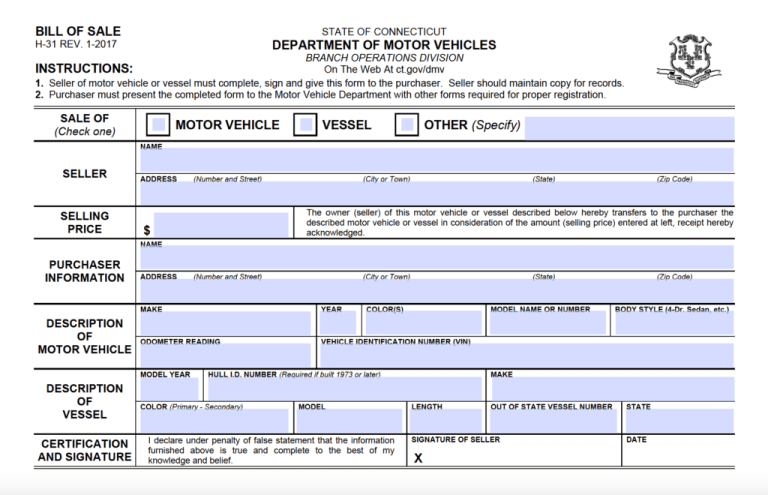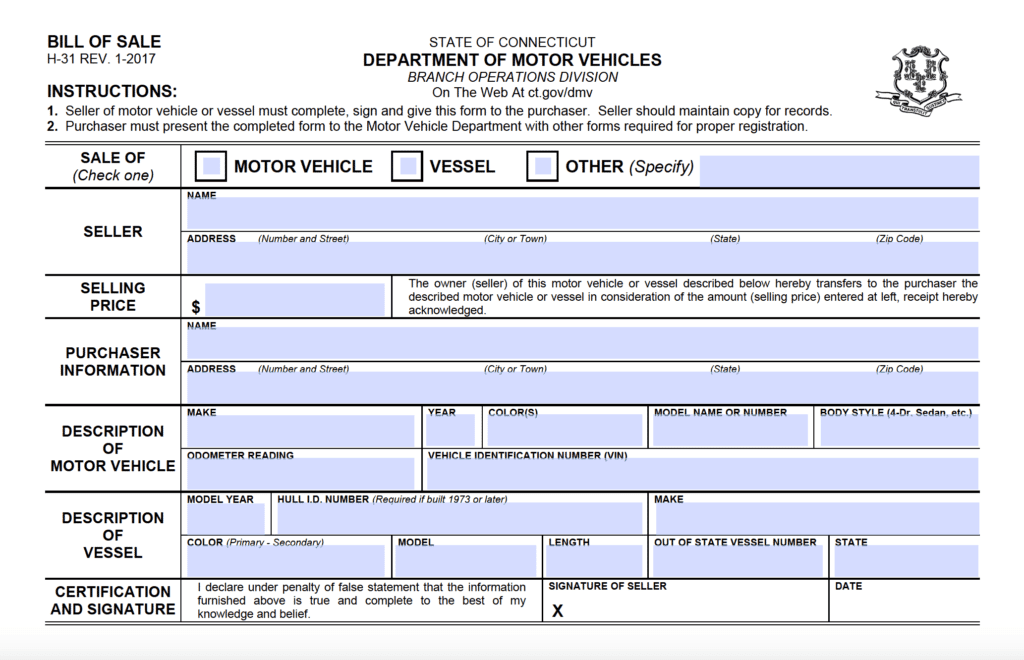How to Register a Vehicle
Visit your nearest DMV location to register your new or used vehicle. Be sure to come equipped with the materials listed below:
- The title is under the new owner’s name.
- The Bill of Sale was acquired at the time of sale.
- An approved emissions test – in congruence with Sec. 14-164c. (You may bring your vehicle to one of Connecticut’s emissions testing centers for evaluation. Some vehicles do not require an emissions test, and find out whether or not your vehicle is excluded by visiting the nearest VIN station for verification.)
- A completed copy of Form H-13B (the Connecticut Registration and Title Application).
- A valid insurance ID card that contains the name of the person registering the vehicle.
- A standard form of identification (driver’s license, state ID, passport, learner’s permit, etc.)
Payment for the process (fees range depending on the type of vehicle being registered).
How to Register a Vessel
The State of Connecticut obligates any vessel with a motor, sailboat, or personal watercraft (jet ski) to be registered to be operated on a body of water within or on the state’s coastline. If you wish to use an out-of-state registered vessel on state waterways, you may do so for a maximum of 60 days.
You can then visit any Connecticut DMV office with the following paperwork for submission:
- A completed Connecticut Application for Vessel Registration and Certificate of Number Decal (Form B-148).
- The filled and signed official Bill of Sale for the State of Connecticut.
- Proof of ownership must be either a manufacturer’s Certificate of Origin or current title and registration if the vehicle was purchased used.
- A form of valid identification such as a Connecticut state ID or driver’s license.
- Verify that you have paid the sales and use tax in Connecticut.
- Payment for all applicable fees and taxes.



